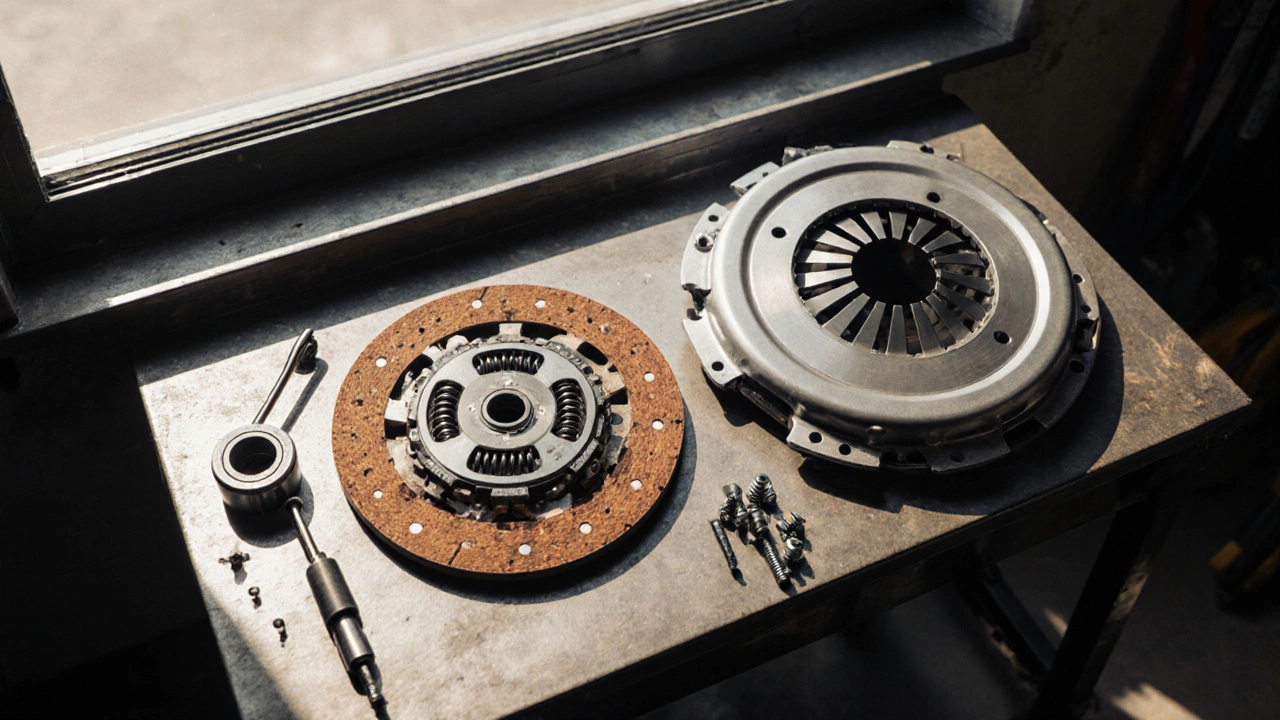
What’s Inside a 2‑Piece Clutch Kit? Complete Parts Breakdown
Learn exactly what components come in a 2 piece clutch kit, their functions, price range, installation steps, and when to choose it over a 3 piece kit.
When you hear 2 piece clutch kit, a type of clutch assembly designed for performance and durability, typically made of two separate components: a pressure plate and a clutch disc. Also known as split clutch kit, it's a popular upgrade for drivers who want more grip and longer life without going full race-spec. Unlike a stock clutch that’s built for smooth daily driving, a 2 piece clutch kit gives you better heat resistance, stronger clamping force, and faster engagement—perfect if you’ve added a tune, turbo, or just like to drive with a bit more spirit.
This setup is different from a single piece clutch, a traditional design where the friction material is bonded directly to the clutch disc, which can wear unevenly under stress. A 2 piece clutch separates the friction material from the disc hub, letting each part handle its job better. That means less chatter, less fade, and more consistent performance when you’re shifting hard or towing. It’s also easier to replace just the friction surface when it wears out, saving you money over time. Many UK drivers pick this setup because it balances daily usability with the ability to handle extra power—no need to sacrifice comfort for performance.
It’s not just about power, though. A clutch kit, a complete set of parts needed to replace or upgrade your car’s clutch system includes more than just the disc and pressure plate. You’ll also get a release bearing, pilot bearing, and sometimes a new flywheel. That’s why people often replace the whole kit at once—worn parts can damage new ones. If your clutch is slipping, making noise, or feeling spongy, it’s not just the pedal acting up. It’s the whole system. And if you’ve done any engine mods, sticking with a stock clutch is like putting a bicycle tire on a motorcycle.
Most 2 piece clutch kits are designed for street use with light track days in mind. They don’t scream like a race clutch, and they don’t require you to baby the pedal. You can still stop at the lights, cruise on the motorway, and park on hills without grinding. But when you floor it from a stop, you’ll feel the difference—less lag, more direct connection between pedal and power. It’s the sweet spot for tuned cars that still need to be driven every day.
What you’ll find in the posts below are real-world guides on spotting clutch wear, comparing upgrade options, and understanding how clutch choice affects everything from fuel economy to gear shifts. Some posts talk about how a bad clutch can mimic other problems—like transmission issues or engine misfires. Others break down why a stage 1 clutch is often the best first step, and how it fits with other upgrades like exhausts or air filters. Whether you’re looking to fix a failing clutch or planning your next performance tweak, these articles give you the facts without the fluff.

Learn exactly what components come in a 2 piece clutch kit, their functions, price range, installation steps, and when to choose it over a 3 piece kit.